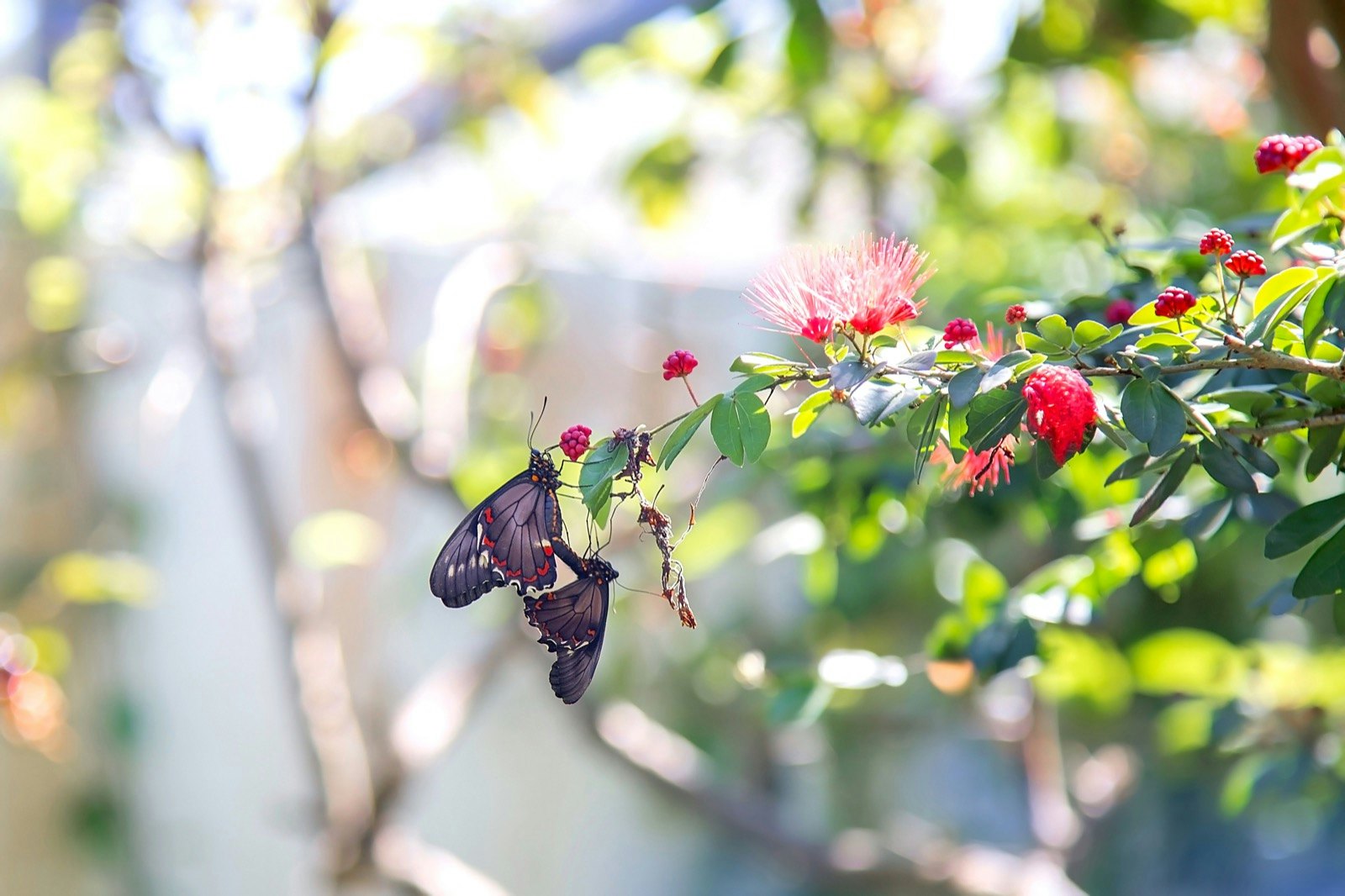

Head to the Florida Keys for some incredible eco-friendly adventures @ Reese Lassman / Getty Images
Warm tropical breezes and cerulean blue waters have long drawn sun-seeking visitors to the Florida Keys. Eager for a fruity drink and a slice of key lime pie, many quickly motor across the 125-mile-long chain of islands, ready to watch the sun dip below the horizon from Mallory Square in Key West.

We say, slow down, friends. There's more to the Florida Keys. From snorkeling and coral reefs to colorful botanical parks and wild bird sanctuaries, every island on the chain has eco-friendly adventures to share and stories to tell visitors keen to get to know the Florida Keys.

Colorful underwater explorations
The journey begins in Key Largo, one hour south of Miami. Here you'll encounter the first of 42 bridges, including famed Seven Mile Bridge, which connects Knight's Key (in the Middle Keys) to Little Duck Key (in the Lower Keys). Along the way, you'll pass 10 state parks, starting with John Pennekamp Coral Reef State Park at Mile Marker 102.5.
A 2.5-hour snorkeling tour that you can book at the on-site dive shop allows you to intimately explore America's first undersea park. A snorkel boat charts a course for several shallow reefs, including Banana Reef and Dry Rocks, each teeming with vibrantly-colored fish darting in and out of reefs and past the submerged nine-foot-tall Christ of the Abyss bronze statue.
Land lovers, stay dry on a glass-bottom boat tour where you'll be mesmerized by the fascinating undersea landscape and playful sea creatures, only minus a snorkel and fins. A high-speed catamaran ferries guests to coral reefs within the Florida Keys Marine Sanctuary to revel in branching corals and schools of tropical fish from long glass windows.

Wild bird rescue stories
Make the Florida Keys Wild Bird Center at Mile Marker 92 in Tavernier your next stop as you drive along the island chain. More than 90 wild birds await at the Lara Quinn Wild Bird Sanctuary, each with its own story of rescue and rehabilitation.
Injured birds, like barn owls, pelicans and blue jays, now call this kind-hearted center their home. Unfortunately, these birds cannot be returned to the wild. Resident brown pelicans are fed each day at 8 am and 2:30 pm (sadly, their injuries keep them from feeding themselves).

Uniquely Islamorada
Best known as the Sport Fishing Capital of the World, Islamorada is one of the more diverse islands on the Florida Keys. At Mile Marker 88.5, make a stop at Windley Key Fossil Reef Geological State Park. This unique state park engages visitors with fossilized coral reefs, known as Key Largo Limestone, which dominates the rock formations found across the Keys.
Rent a canoe or kayak to paddle half-mile offshore to Indian Key Historic State Park at Mile Marker 78.5 in Islamorada. Briefly inhabited in the mid-19th century, the island has since been reclaimed by Mother Nature. Archaeological ruins remain, including a former U.S. Navy Hospital. An observation tower allows guests remarkable bird's-eye views across the island.
A mere stone's throw from Indian Key is Alligator Reef at Mile Marker 77. Thankfully, you won't find any alligators here. You will, however, find a 136-foot-tall lighthouse and kayak rentals to explore the crystal-clear waters. This is one of the best spots for snorkeling in the Florida Keys, so keep your eyes open for coral sponges and colorful fish.

Creatures and wildlife aplenty
As you continue your drive west, stop in Marathon. You won't want to miss the Turtle Hospital at Mile Marker 48.5. Take a guided 90-minute tour of the facility to learn about a day in the life of a sea turtle, including the critical work done to rescue, rehabilitate and release endangered sea turtles.
As part of the interactive tour, you'll see where veterinarians perform turtle surgeries, as well as where current patients and long-term guests (those sea turtles that cannot be released) reside. Fun fact: the Turtle Hospital is a former mom-and-pop motel from the 1950s. The massive 100,000-gallon pool once used by motel guests now allows sea turtles to freely swim.
Continue west to Bahia Honda State Park on Big Pine Key. Located at Mile Marker 37, you'll find Calusa Beach, one of the most popular natural beaches in the Florida Keys. Splash around or navigate the calm, clear waters in a sit-on-top ocean kayak.
At Bahia Honda State Park, stop in the Sand and Sea Nature Center to learn more about sea turtles and Key deer, as well as various wading birds. Further on, at Mile Marker 30.5, the new Florida Keys National Wildlife Refuge Nature Center is open with more on the work done to protect the Key deer population.

Eco-friendly Key West
Once you reach Key West at Mile Marker 0, there are still plenty of enticing eco-adventures to be found. Fort Zachary Taylor Historic State Park boasts one of the best offshore snorkeling beaches in Key West. Once you dry off, immerse yourself in wooded nature trails and the history of this Civil War era fort built to guard Key West's harbor.
Make the Key West Tropical Forest & Botanical Garden the final stop on your eco-friendly adventure. You'll be delighted by a butterfly garden filled with flowering plants and flitting butterflies, as well as lush tropical gardens. It's also an excellent location for watching birds, like green herons and morning doves.
Of course, before you leave Key West, you'll still want to pose with the huge buoy that marks the Southernmost Point and revel in a deliciously sweet Frozen Key Lime Pie on a Stick (chocolate-covered, of course). Watch the colorful sunset at Mallory Square and relish all the eco-friendly fun you had on your drive across the Florida Keys.
Produced by Lonely Planet for the Florida Keys and Key West Tourist Development Council. All editorial views are those of Lonely Planet alone and reflect our policy of editorial independence and impartiality.
















